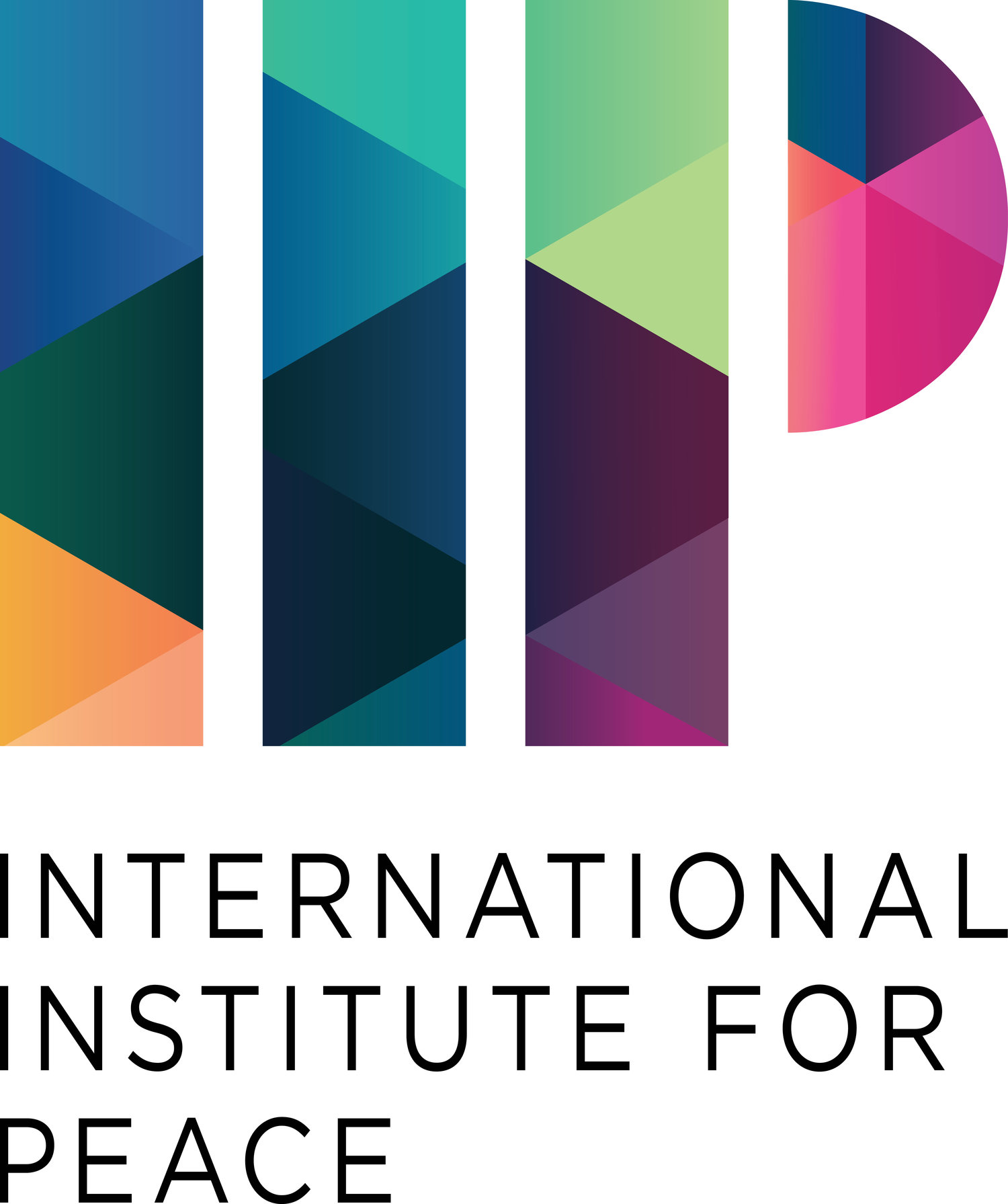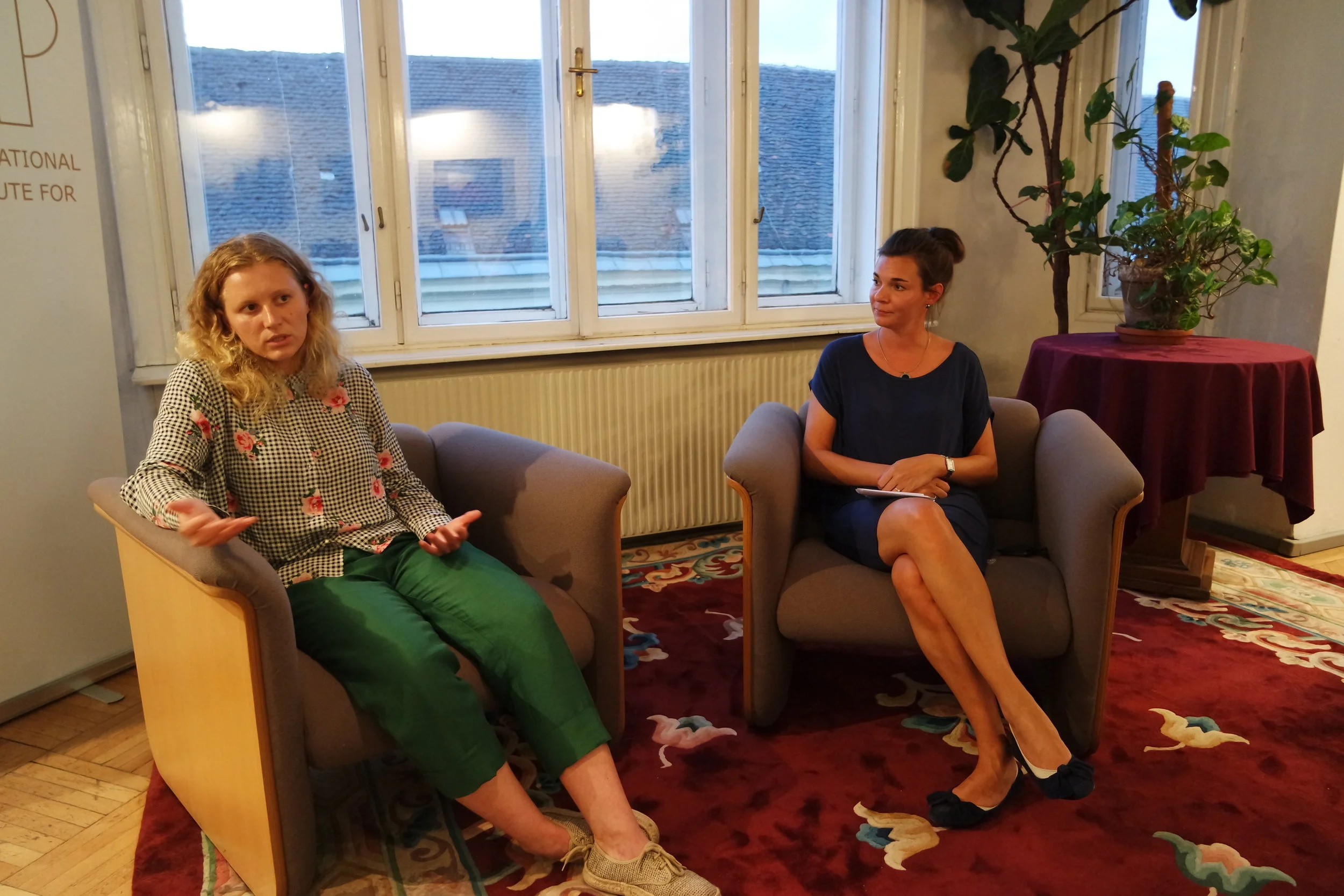by Maro Polykarpou
Maria Kulikovska is a Ukrainian artist, architect, actionist, and curator. She was born and raised in the city of Kerch in Crimea, a place whereby she cannot return after the Russian annexation of Crimea. She has been living in Kyiv since and has had various exhibitions in different European cities which convey her experiences after the 2014 Madiadan After an insightful discussion with her at the International Institute for Peace in Vienna, we learned why it is important for her to transcend art into the wider political field.
At the time the revolution started Kulikovska was in Kyiv as a nominee for the Pinchuk Art Prize 2013. Finding herself a displaced citizen, not being able to return home, she has since been established in Kyiv. As she explains, her decision not to return to her home city is not only a political stance towards Russia but it also stems for the fact that she has not acquired a Russian passport - which after the Russian annexation is a legal requirement- denoting the support for Russia. A person who lacks a Russian passport is seen as a terrorist in the eyes of the Russians, explains Ms Kulikovska, and can be imprisoned for up to 20 years. However, it is not just her decision not to obtain a Russian passport that has placed under the Russian radar. Her own artwork, infused with her reforming political views, has ‘earned’ her a place in the Russian list of forbidden artists.
Her artwork has always been a way to express her political views, ‘I have always heavily involved politics in my art, even before 2013’. It is indeed one of her politically influenced performances, done a few months before the 2013 revolution, that has ‘saved her’ as she herself puts it. Kulikovska and her then female partner Jaqueline Shabo united by marriage in Sweden – the marriage as she described was an artistic expression and manifestation, by turning "personal" life into the open through artistic and political social platforms for the exposure of LGBT rights. Although initially perceived as no more than an artwork performance, after the annexation it turned into something else, namely the possibility to save her civil documentation.
For Kulikovska the identification crisis between Russian and Ukrainian after the events in Kyiv, Crimea and the Donbass region was pivotal, causing her to radically shift the focus of her artwork towards the armed conflict in Ukraine. This led her to initiate ‘The Raft Crimea’, a project whereby she stayed for 3 days and 3 nights in a raft in Kyiv river, without any resources, supported only by passerby donations. For Kulikovska, the idea behind the project was to show that through the selfless act of sharing resources with her, people would exhibit ‘solidarity and push away all the prejudices and show empathy’. What is more, as she explains, she wanted the raft to ‘become a place for meeting people with different ideas and thoughts’. Her project was aimed at raising awareness of the treacherous circumstances and difficulties the 2 million displaced people in Ukraine face and provide them with a voice. But what is striking, is that for the displaced persons there, her project was not a somber reminder of their situation, but rather it became a celebration between them, commemorating their uniqueness.
Recently there have been several reports about increasing groups of Ukrainian right wing nationalists in Kyiv, raiding exhibitions of left wing and feminist artists and violently destroying them. Kulikovska admits to have been subjected to a similar attack by a right wing organisation in 2015. Her exhibition of ‘Flowers of democracy’, aimed to tackle issue of patriarchy and sexism in Ukraine, had been raided by supporters of a right wing organisation, who destroyed all of her sculptures and even resorted to hitting one of the female activists taking part in the exhibition. To Kulikovska these rebels are young people without any ideology and without the right educational background to help them realise their potentials. As she explains, the result is that they become easily manipulated and act as a mouthpiece for other organisations. What she has gathered from her own confrontation with them is that these young people lack democratic values. ‘They don’t know how to listen, communicate and discuss’. Their only reason for the attack was proclaimed to be that they were told that feminism is bad and that her sculptures of plastered vegans were vulgar and had to be destroyed.
But this unpleasant experience didn’t deter her from continuing her effort and endeavour. As she states ‘It keeps me going, so that I can educate people through some different ways of communication’. Kulikovska sees herself as an independent conceptual artist.There is always a backstory behind her artwork, but as she clarifies her actions do not stem from her desire for glory and fame, rather her wish to show the history behind her ideas. That is why she is very strategic when it comes to what materials she builds her artwork with and she always ensures that every part that is comprising her work has a deeper meaning and subcontext to it as well as a historical aspect.
However, she downheartedly acknowledges that any collaboration possibility with a Russian anti-Putin artist is hardly achievable at the moment. As she has gathered from personal experience, there remain some imperialist sentiments that undermine any effort for alliance and collaboration and weaken the respect for the common history of the two countries. As Kulikovska explains, Ukrainian artists are not treated on equal basis by the Russian artists, but are rather seen as 2nd class citizens. At the other end of the spectrum there are Russian artists that are scared of travelling to Ukraine, despite them having a clear anti-putin sentiments and agenda. This is due to the false beliefs spread by Russian propaganda which distorts the truth about Ukrainians desire for freedom, presenting them as nationalists and even fascists, who would kill any person of Russian origin. This not only undermines any intentions of the artists on a personal level to collaborate between them, but it goes beyond the professional world, destroying the interpersonal and familiar relationships between the Ukrainian and Russian people.
As to a solution, Kulikovska brings a different perspective. In her opinion the people of Ukraine need ‘healing’. There needs to be a meeting point where people can have the space and possibility to talk and discuss with each other. In her opinion, art can provide this meeting point, a neutral ground where people from different places, backgrounds and ideologies can come together and communicate. In her eyes art can truly be part of the solution. It provides an alternative reality where people can imagine freely with no constraints and limitations and can think about their future and shape it as they wish. According to Kulikovska this is how the healing process can start.
Her personal dream when it comes to the future of Crimea is for it to become a real autonomous republic. As she explains, this desire has its roots in her childhood days, at a time where the wish for independence was deeply embedded within the people of Crimea. This is precisely what her upcoming book ‘The president of Crimea’ will elaborate on. Although she does not know how feasible the idea is now, she still maintains her desire for Crimea to become a developed and popularised area and not remain a forgotten place. Giving the example of her birth place, a town that is one of the oldest in the world, she emphasises how Crimea is a cultural heritage site that should be available to the whole world.
But it is not just the need for popularization that is of pivotal importance to Kulikovska, but mostly the need for strong social protection of the people of Ukraine. According to her, access to education and equality is the key for a better future. Resources should not be concentrated on some hands and corruption should be diminished. For this reason, Kulikovska believes that Western Europe provides the best model when it comes to human rights and people’s own realisation of those rights. As she explains it is a society that gives them the required resources and provides them with a good quality of living. When it comes to her own country her wish is for people to be given the possibility to be ‘learn to be free’ so that they can then believe in their own possibilities and in their own country. Only then can the people of Ukraine can set aside their resentments and negativity and really flourish.






